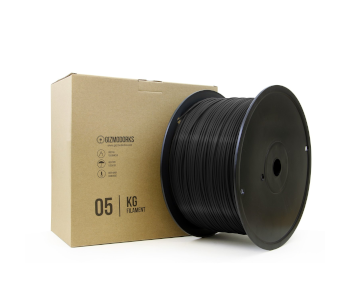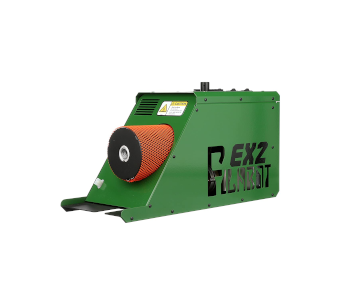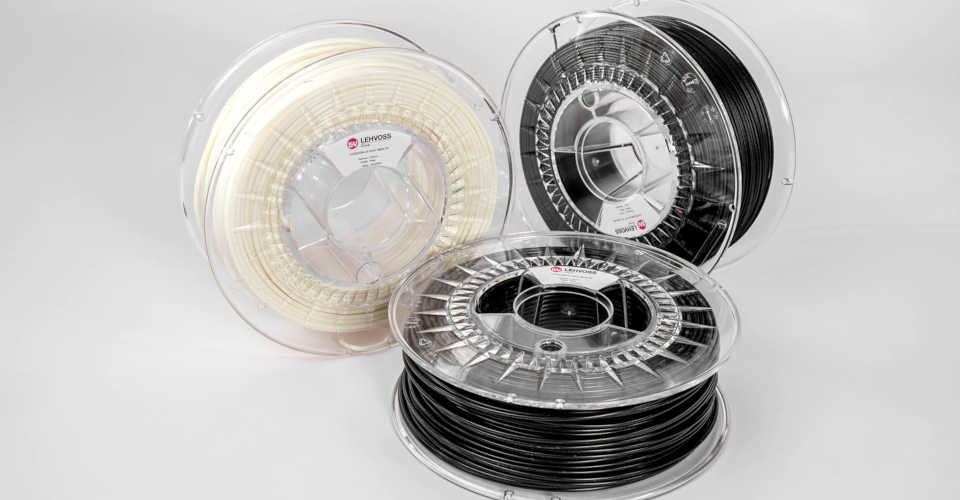Is PLA Really Biodegradable or Sustainable?
The sustainability of using PLA has been one of its more enduring selling points, whether as a 3D printing material or for other applications and industries. On the production side, this claim is bolstered by the fact that the raw materials for PLA are derived from the fermentation of plant matter.
However, how well does the “sustainable” brand hold up when it comes to disposal? Is PLA really as easily biodegradable as its manufacturers claim it is? In this article, we’re taking a look at what it means for a substance to be biodegradable and whether this applies to PLA.
What is PLA made of?
PLA (polylactic acid) is a polymer made up of lactide monomers. One factor that makes it a more sustainable alternative to petroleum-derived plastics is the fact that its lactic acid raw materials can be sourced from plant matter.
For instance, corn starch and sugar can be mixed with enzymes that break down these starches into sugars with smaller molecular weight. These sugars are then exposed to fermenting bacteria which turns them into lactic acid. PLA can be created either from lactic acid or lactide, the former of which continues to be further developed because of its superior economics.
Lactic acid is a naturally occurring compound that is generally safe for humans, animals, and the environment. When PLA breaks down, it returns to its original lactic acid constituents, further boosting its image as a fully sustainable bioplastic.
However, one question remains – how readily does PLA break down to its lactic acid components? Is PLA really as biodegradable as it appears?
Is PLA biodegradable or compostable?

When looking at the sustainability of PLA, a distinction needs to be made between the terms ‘biodegradable’ and ‘compostable.’ A material is considered biodegradable if it can be broken down by naturally occurring biological organisms, whether in aerobic or anaerobic conditions. Composting, on the other hand, is a man-made process that involves careful control of factors like soil composition, temperature, and humidity.
The iffy thing about calling any material ‘biodegradable’ is that just about anything can be decomposed naturally given enough time. The only question that remains is whether this decomposition process will be completed within a timeframe that is practical or acceptable.
Where does PLA fit in this spectrum of biodegradability? According to studies, when left in the wild, PLA will be completely broken down only after 80 years. This does not feel like an acceptable timeframe for a material that is almost unanimously described as being ‘environment-friendly.’ When disposed of just like normal kitchen scraps, PLA will significantly contribute to a growing solid waste problem.
Now that we know that it’s not enough to dispose of PLA scraps and let nature do its work, it’s more accurate to describe it as ‘compostable’ and not ‘biodegradable.’ This means that throwing away PLA scraps with food and other organic wastes is not proper, nor is burying them in your backyard.
What does it take to decompose PLA?
So far, we know that it takes highly controlled conditions for PLA to decompose to its constituent lactic acid components. What are these conditions and is there really no way for these conditions to be satisfied naturally?
For a PLA polymer to break apart, it needs to undergo a process called hydrolysis. This does not happen spontaneously, as evidenced by the fact that your PLA prints do not just fall apart after a few months. Hydrolysis of PLA only occurs in the presence of specific enzymes, particularly Proteinase K. The problem is that such enzymes are rarely ever found in nature.
For this reason, PLA only effectively breaks down under industrial composting conditions. This treatment can vary from one composting plant to another but generally involves control of humidity and temperature (55 to 70 °C), an oxygen-rich environment, and the introduction of a cocktail of microorganisms.
Another complication is the fact that not all composting plants are equipped to handle PLA. According to a survey done by the German Environmental Aid on almost 1000 composting plants in Germany at least a year ago, about 95% of them are not qualified to handle composting of bioplastics according to set environmental standards. Moreover, most of them consider bioplastics as a ‘contaminant’ to standard organic waste and biological waste.
These facts highlight that the task of proper disposal of PLA is not as simple as it seems. Although the technology exists for PLA composting, not all cities, states, or countries may have the infrastructure for it. While the claims of PLA being ‘sustainable’ are still technically correct, it may not be applicable for all scenarios and settings around the world.
The ethics of PLA production
Let’s take a step back and look at the other end of the sustainability chain. A huge selling point of PLA is that it’s manufactured from plant matter, which is a sustainable source. However, the main source of raw materials for PLA is corn – a staple food source for billions of people around the world.
This raises an interesting moral and ethical dilemma. Is it ethical to use up a huge portion of the world’s food crops for plastic production, especially with huge populations around the world facing hunger and food shortage? The effects of global warming also have to be considered, as they have made crop productivity challenging despite advances made in agricultural technology.
Based on existing PLA production technologies, it will require about 2.7 kilograms of corn to make 1 kilogram of PLA plastic. This means that 715.5 million tons of corn will be needed to fully convert the 270 million tons of plastic made and used worldwide. This might even be a conservative estimate given how plastic use has been steadily increasing over the last couple of years.
Recycling PLA – a more sustainable alternative

Now that we have realized that PLA may not be as sustainable as previously thought, is it still a good idea to continue using it? The good news is that PLA is still a lot more environment-friendly than plastics derived from petroleum-based sources. PLA may not be completely sustainable but there are more practices in handling in PLA that are considered more responsible.
A growing trend in the industry has been to recycle scrap PLA prints. Since PLA is a thermoplastic, its mechanical and chemical properties should not change even when it undergoes a melting and solidification process. There is now equipment that can convert PLA scraps to fresh filament, such as the Filabot EX2 Extruder. Filabot also offers a service where you can send them PLA scraps and they will do the recycling for you.
If you can practice this, then this is a more sustainable way of using PLA filament. Theoretically, you can just cycle through spools of PLA and use the scraps indefinitely. As with most things, this is easier said than done.
The problem with this approach is that it places the financial burden of recycling on the user. It’s not cheap, either. The Filabot extruder costs almost $2000. If you want to get additional accessories like the filament cooler and spooler, that price can increase to anywhere between $8000 to $10,000. At this price range, only professional users can afford to have their own filament recycling system.
There’s also the fact that not all PLA filaments can be recycled. Some PLA filaments may have dyes or additives that make them unfit for recycling. You will also have to be careful when mixing PLA scraps for feedstock, as you may end up with a recycled filament in an ugly color.
Final thoughts
In this article, we have taken a more sobering look into how ‘sustainable’ PLA really is. PLA is often touted as the more environment-friendly filament material used in 3D printing, but this isn’t quite as simple as that statement makes it out to be.
Technically, the term ‘biodegradable’ applies to PLA. However, it does not seem an appropriate label given that it will take about an entire human lifetime for PLA to fully decompose under natural conditions. Calling ‘PLA’ compostable is more accurate, although there are still a few contentions to that claim.
The hard truth is that our current recycling facilities are not yet well-equipped to handle bioplastics, including PLA. Recycling technology is far from perfect as it is, as evident by the fact that many developing countries don’t even have recycling facilities. The strides that have made in the development of bioplastics in the last few years have been impressive, but methods for proper disposal and recycling of them are still playing catch-up.
As far as 3D printing is concerned, PLA still represents the most environment-friendly material available. However, we advise caution against getting carried away with the marketing slant that PLA is ‘biodegradable’ and ‘sustainable.’ While these are not inaccurate claims, they aren’t entirely applicable in all scenarios. In the lack of better options, our best piece of advice is to be responsible for your use of 3D printing filaments. Generate as little waste as possible, and try to recycle whatever filament material that you can.


